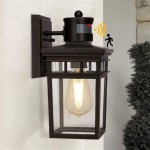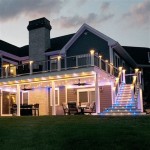What Should I Use To Paint Outdoor Wood Furniture?
Selecting the appropriate paint for outdoor wood furniture is crucial for both aesthetic appeal and long-term preservation. Outdoor furniture is exposed to a variety of environmental stressors, including sunlight, moisture, temperature fluctuations, and potential biological threats like mold and mildew. Choosing the right paint involves considering the type of wood, the desired finish, and the level of protection required. This article will explore various paint options, outlining their properties, advantages, and disadvantages, thereby assisting in making an informed decision for outdoor wood furniture painting projects.
Prior to selecting a specific paint type, thorough preparation of the wood surface is paramount. This preparatory phase significantly impacts the paint's adhesion, durability, and overall lifespan. The initial step typically involves cleaning the furniture to remove any dirt, grime, mildew, or existing loose paint. A solution of mild detergent and water, coupled with a scrub brush, effectively addresses these surfaces. Following cleaning, allow the wood to dry completely before proceeding to the next stage.
Sanding is a critical step in preparing the wood for painting. It creates a slightly rough surface that promotes better paint adhesion. Use sandpaper with varying grits, starting with a coarser grit to remove imperfections and then moving to a finer grit for a smooth finish. For previously painted furniture, remove any flaking or peeling paint with a paint scraper before sanding. After sanding, remove all sanding dust with a tack cloth or a vacuum cleaner. Failure to remove dust particles can compromise the paint's adhesion and result in an uneven finish.
Priming is often recommended, especially for bare wood or when switching between different types of paint. Primer serves as a foundational layer, sealing the wood and providing a uniform surface for the topcoat. This ensures better adhesion, prevents the topcoat from being absorbed into the wood unevenly, and enhances the paint's overall durability. There are various types of primers available, including oil-based, latex-based, and specialized primers for specific wood types or conditions. Choose a primer that is compatible with the topcoat being used.
Understanding Paint Types for Outdoor Wood Furniture
Several types of paint are suitable for outdoor wood furniture, each offering distinct characteristics and levels of protection. The choice depends on factors such as the desired aesthetic, the type of wood, and the anticipated exposure to the elements. Oil-based paints, latex-based paints, acrylic paints, and specialty coatings each present unique considerations.
Oil-based paints, also known as alkyd paints, are known for their excellent durability and resistance to moisture. They penetrate wood deeply, providing a tough, protective layer that withstands harsh weather conditions. Oil-based paints offer superior leveling properties, resulting in a smooth, even finish. They are also highly resistant to scratches and abrasions, making them ideal for furniture that experiences frequent use. However, oil-based paints have several drawbacks. They require a longer drying time compared to latex-based paints, and they emit strong odors due to the presence of volatile organic compounds (VOCs). Cleanup requires paint thinner or mineral spirits, which can be inconvenient. Furthermore, oil-based paints tend to yellow over time, especially when exposed to sunlight. Despite these drawbacks, their durability and moisture resistance make them a suitable choice for furniture in particularly demanding environments.
Latex-based paints, also referred to as water-based paints, offer several advantages over oil-based paints. They are low in VOCs, resulting in minimal odor and making them environmentally friendly. Latex paints dry quickly, allowing for faster project completion. Cleanup is easy, requiring only soap and water. Latex paints are also highly flexible, which allows them to expand and contract with the wood as temperatures fluctuate, minimizing the risk of cracking or peeling. However, latex paints are generally less durable than oil-based paints and may not provide the same level of moisture resistance. They may also require more coats to achieve adequate coverage. Modern formulations of latex paints have improved significantly in terms of durability and moisture resistance, making them a viable option for many outdoor furniture applications. Look for exterior-grade latex paints specifically designed for outdoor use.
Acrylic paints provide a balance between the durability of oil-based paints and the convenience of latex-based paints. They are highly resistant to fading, cracking, and peeling, making them suitable for outdoor use. Acrylic paints offer excellent color retention and are available in a wide range of colors and finishes. They also adhere well to various surfaces, including wood, metal, and plastic. Acrylic paints are typically water-based, making them easy to clean up and low in VOCs. However, some acrylic paints may not be as durable as oil-based paints in terms of scratch resistance. Choose an exterior-grade acrylic paint formulated for outdoor wood furniture for the best results. Acrylic paints are also a good option for projects where color is a primary concern, as they offer vibrant and long-lasting hues.
Specialty coatings are designed for specific purposes and offer enhanced protection and performance. These coatings include paints containing UV inhibitors to prevent fading, mildew-resistant paints to inhibit mold growth, and elastomeric coatings that provide exceptional flexibility and crack resistance. Marine paints, specifically formulated for use on boats and other marine structures, offer excellent water resistance and are a suitable option for furniture exposed to frequent moisture. Deck stains, while technically not paints, can also be used to provide color and protection to outdoor wood furniture, especially if a more natural wood appearance is desired. Selecting a specialty coating depends on the specific environmental challenges the furniture will face.
Factors Influencing Paint Selection
Beyond the type of paint, several other factors influence the optimal choice for outdoor wood furniture. The type of wood, the desired finish, and the local climate all play a significant role in determining the most suitable paint. Consideration of these factors ensures that the selected paint provides adequate protection, achieves the desired aesthetic, and withstands the specific environmental conditions.
The type of wood used to construct the furniture impacts the choice of paint. Softwoods, such as pine and cedar, are more porous than hardwoods, such as oak and maple. This means that softwoods absorb more paint, potentially requiring additional coats for adequate coverage. Softwoods also require thorough priming to prevent the paint from being absorbed unevenly, which can lead to a blotchy finish. Hardwoods, on the other hand, are less absorbent and generally require fewer coats of paint. However, hardwoods may contain natural oils that can interfere with paint adhesion. It is important to properly prepare hardwoods by cleaning and sanding to remove these oils before applying paint. For oily woods like teak, a specialized primer designed to promote adhesion is recommended. Understanding the properties of the wood being painted is crucial for selecting a paint that will adhere properly and provide lasting protection.
The desired finish also influences paint selection. Different types of paint offer varying levels of sheen, from matte to gloss. Matte finishes are less reflective and tend to hide imperfections better, but they are also less durable and more difficult to clean. Gloss finishes are more reflective and easier to clean, but they highlight imperfections. Semi-gloss and satin finishes offer a compromise between durability and aesthetic appeal. The choice of finish depends on the desired look and the level of maintenance required. For furniture in high-traffic areas, a more durable, easy-to-clean finish, such as semi-gloss or gloss, is generally recommended. For furniture where a more subtle, natural look is desired, a matte or satin finish may be preferred.
The local climate is a crucial factor in selecting paint for outdoor wood furniture. Furniture in areas with high humidity and frequent rainfall requires paint that is highly resistant to moisture. Oil-based paints and specialized marine paints are excellent choices for these conditions. Furniture in areas with intense sunlight requires paint with UV inhibitors to prevent fading and degradation. Acrylic paints and specialized coatings with UV protection are suitable options. In regions with significant temperature fluctuations, paint that is flexible and resistant to cracking and peeling is essential. Latex-based paints and elastomeric coatings are well-suited for these conditions. Consider the specific environmental challenges of the local climate when selecting paint for outdoor wood furniture to ensure that it provides adequate protection and maintains its appearance over time.
Application Techniques and Best Practices
Proper application techniques are as important as selecting the right paint. Even the best paint will perform poorly if not applied correctly. Several key techniques ensure a smooth, durable, and long-lasting finish on outdoor wood furniture.
Selecting the right tools is essential for achieving a professional-looking finish. High-quality brushes and rollers are crucial for applying paint evenly and efficiently. Use synthetic brushes for latex-based paints and natural bristle brushes for oil-based paints. Choose a brush size appropriate for the size of the furniture and the complexity of the design. For large, flat surfaces, rollers can speed up the painting process. Use a roller with a nap length appropriate for the texture of the wood. Short-nap rollers are suitable for smooth surfaces, while longer-nap rollers are better for rough surfaces. In addition to brushes and rollers, other useful tools include paint trays, painter's tape, drop cloths, and stir sticks. Investing in quality tools will make the painting process easier and produce better results.
Applying paint in thin, even coats is crucial for achieving a smooth and durable finish. Avoid applying thick coats, as this can lead to drips, runs, and uneven drying. Apply multiple thin coats, allowing each coat to dry completely before applying the next. This allows the paint to adhere properly and prevents the formation of bubbles or other imperfections. Use long, even strokes when applying paint with a brush or roller. Overlap each stroke slightly to ensure complete coverage. Pay attention to edges and corners, using a brush to carefully apply paint to these areas. Avoid painting in direct sunlight or during periods of high humidity, as this can affect the paint's drying time and adhesion.
Proper drying and curing are essential for achieving a durable and long-lasting finish. Follow the manufacturer's instructions for drying times, as these can vary depending on the type of paint and the environmental conditions. Allow the paint to dry completely before using the furniture. Avoid placing objects on the furniture during the drying process, as this can leave marks or indentations. Once the paint is dry to the touch, allow it to cure for several days to fully harden and bond to the wood. Curing enhances the paint's durability and resistance to scratches and abrasions. Protect the furniture from moisture and direct sunlight during the curing process. Following these drying and curing guidelines will ensure that the paint provides optimal protection and maintains its appearance over time.

How To Paint Outdoor Furniture Style At Home

Painting The Outdoor Furniture How I Got That Barnwood Color

How To Paint Exterior Wood Furniture A Turtle S Life For Me

How To Paint Outdoor Wood Furniture And Make It Last For Years

Renew Outdoor Furniture With Spray Paint A Cook And Her Books

How To Paint Outdoor Wood Furniture So That It Lasts Wallauer S Center

15 Tips For Painting Outdoor Furniture To Last Longer

How To Paint Stain Outdoor Wood Furniture Benjamin Moore

Painted Wood Patio Furniture Rust Oleum

How To Paint Outdoor Wood Furniture And Make It Last For Years
Related Posts







